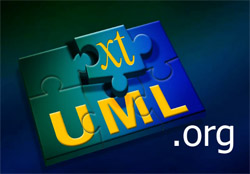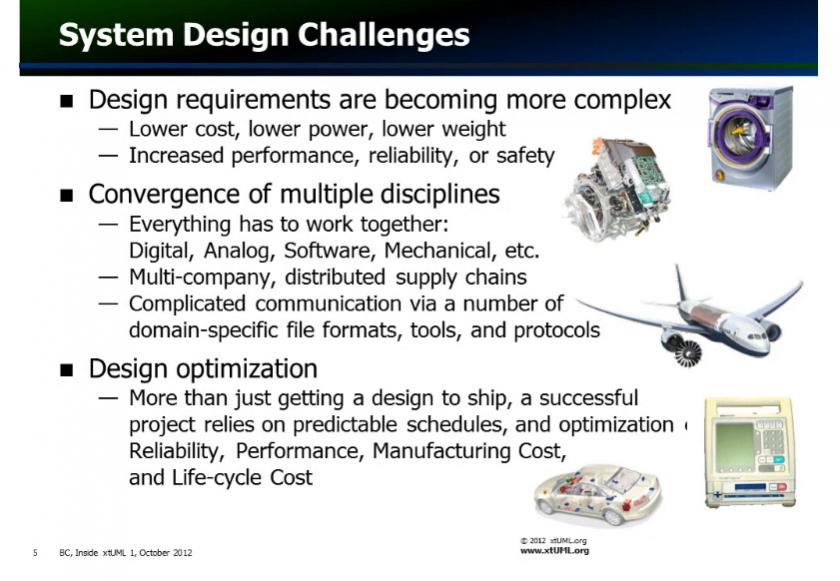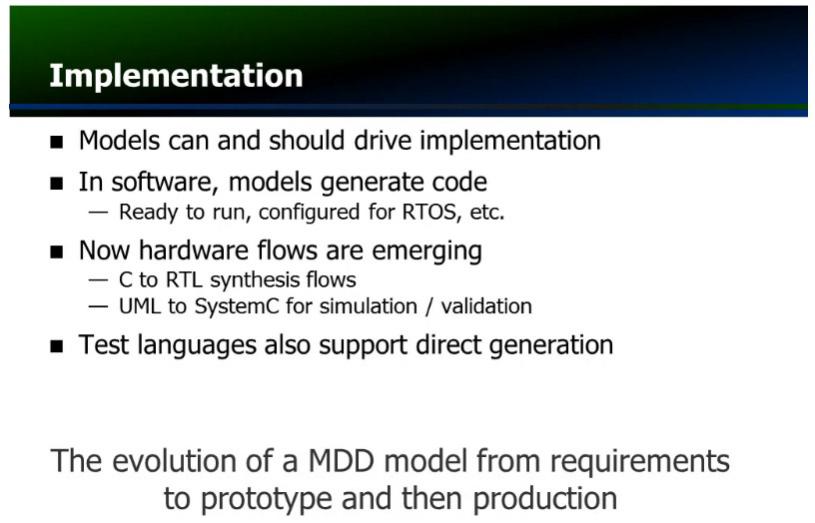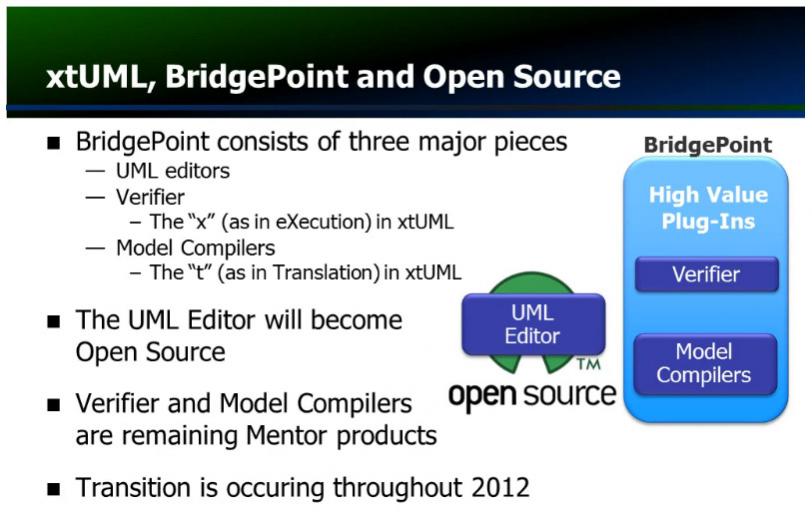 Mentor has a webinar on Model Driven Development (MDD) for Systems Engineering, presented by Bill Chown. It is actually the first of 15 webinars. This first one is just over 30 minutes long and I assume the others will be too. The webinar focuses on embedded system development, which historically has largely been validated using physical prototypes. Of course one problem with that is that by the time you get to physical prototypes it is hard to make major architectural changes. If the hardware is a chip, by the time you have a prototype it is almost impossible to make any changes at all.
Mentor has a webinar on Model Driven Development (MDD) for Systems Engineering, presented by Bill Chown. It is actually the first of 15 webinars. This first one is just over 30 minutes long and I assume the others will be too. The webinar focuses on embedded system development, which historically has largely been validated using physical prototypes. Of course one problem with that is that by the time you get to physical prototypes it is hard to make major architectural changes. If the hardware is a chip, by the time you have a prototype it is almost impossible to make any changes at all.

UML (which stands for Universal Modeling Language) is a very general purpose modeling language orignally used mostly for object-oriented software development. Developed originally in the mid-90s it has been extended to hardware development and, especially, systems that consist of lots of components perhaps in different domains: hardware, software, mechanical and so on.

The idea of model driven development is to use UML at the architectural stage and so instead of ending up with requirements on reams of paper and a few spreadsheets there is an executable specification. This can be made use of through the whole development cycle by:
- architect
- component developers
- system integrators

BridgePoint consists of 3 major components:
[LIST=1]
Mentor plans to make the UML editor open-source, but the Verifier and Model Compilers will remain Mentor products.
The Model Driven Development webinar is here.
There are also short 5-minute tutorials on various aspects of UML and Mentor’s BridgePoint here.
The next webinar is on October 30th at 8am. Bill Chown will present UML, xtUML and the xtUML Process. Registration is here.
The remaining webinars (through next February) are:
- Creating an xtUML Model (Part 1: The Diagrams) Nov 6, 2012
- Creating an xtUML Model (Part 2 – Object Action Language) Nov 13, 2012
- xtUML and Domain-specific Modeling Nov 20, 2012
- Verification and Validation of xtUML Models Nov 27, 2012
- Model Compilation Dec 4, 2012
- xtUML Projects with Legacy Code Dec 11, 2012
- SystemC Virtual Platform Creation Dec 18, 2012
- Executable Testbench Design in xtUML Jan 8, 2013
- xtUML and the Notion of Time Jan 15, 2013
- Best Practices for Structuring an xtUML Project Jan 22, 2013
- Configuration Management in xtUML Projects Jan 29, 2013
- Safety-critical Applications and xtUML Feb 5, 2013
- Customizing a Model Compiler Feb 12, 2013








Comments
There are no comments yet.
You must register or log in to view/post comments.